Pyramidhead (talk | contribs) (little tidbit in 3x22) |
Pyramidhead (talk | contribs) No edit summary |
||
| Line 15: | Line 15: | ||
== Geography == |
== Geography == |
||
[[File:Greater_Los_Angeles.jpg|200px|thumb|left|The greater Los Angeles area, as seen in a [[CTU]] map]] |
[[File:Greater_Los_Angeles.jpg|200px|thumb|left|The greater Los Angeles area, as seen in a [[CTU]] map]] |
||
| − | Los Angeles was divided into many districts and neighborhoods, and borders many independent cities in [[Los Angeles County]], most of which are popularly grouped with the city itself. The |
+ | Los Angeles was divided into many districts and neighborhoods, and borders many independent cities in [[Los Angeles County]], most of which are popularly grouped with the city itself. The Los Angeles urban area, more than four thousand square miles in total, lay within a large basin extending from the Pacific to the [[San Gabriel Mountains]]. In the northwest lies the [[San Fernando Valley]], which contained almost half of the city's landmass, as well as a number of its suburbs. {{cite|th|1x01|3x22|''et al''}} |
Los Angeles was built over a series of fault lines, making it geologically unstable and prone to earthquakes. Many of these fault lines were the sites of [[tectonic focal point]]s. {{cite|gx27}} |
Los Angeles was built over a series of fault lines, making it geologically unstable and prone to earthquakes. Many of these fault lines were the sites of [[tectonic focal point]]s. {{cite|gx27}} |
||
Revision as of 06:19, 10 September 2010
| Los Angeles | |
|---|---|
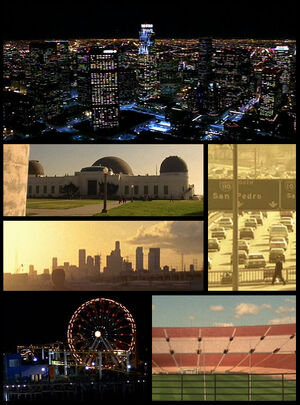
| |
| Clockwise from top: Los Angeles at night, the 110 Freeway, Los Angeles Coliseum, the Santa Monica Pier, Downtown Los Angeles at dawn, and the Griffith Park Observatory | |
| Location: | Los Angeles County, California, USA |
| Population: | 10,000,000 |
| Season(s): | 1, 2, 3, 4, 5, 6, 7 |
| First episode: | "Day 1: 12:00am-1:00am" |
| Last episode: | "Day 7: 5:00am-6:00am" |
Los Angeles was a large and populous American city, located in southern California on the shore of the Pacific Ocean. It is also the seat and largest city of Los Angeles County. Often known by its initials, L.A., Los Angeles is a global center of politics, international commerce, culture, media, science, technology, and education, rivaled in the United States only by New York City.
Geography
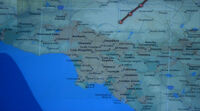
The greater Los Angeles area, as seen in a CTU map
Los Angeles was divided into many districts and neighborhoods, and borders many independent cities in Los Angeles County, most of which are popularly grouped with the city itself. The Los Angeles urban area, more than four thousand square miles in total, lay within a large basin extending from the Pacific to the San Gabriel Mountains. In the northwest lies the San Fernando Valley, which contained almost half of the city's landmass, as well as a number of its suburbs. (Trojan Horse, "Day 1: 12:00am-1:00am", "Day 3: 10:00am-11:00am", et al)
Los Angeles was built over a series of fault lines, making it geologically unstable and prone to earthquakes. Many of these fault lines were the sites of tectonic focal points. (The Game · "Jack Tracks Kim to Madsen's Base")
The city's climate was typically temperate year-round, with occasional rainstorms. ("Day 4: 5:00am-6:00am")
Regions and districts
Downtown Los Angeles and its surrounding vicinity, viewed from the west

Los Angeles' Financial District
Downtown Los Angeles
- Main article: Downtown Los Angeles
Downtown Los Angeles - bounded by the 101 Freeway to the north, the 10 Freeway to the south, and the 110 Freeway to the west - was the city's central business district, located close to the geographic center of its metropolitan area, and home to the skyscrapers that gave the city its distinctive skyline. Many multinational corporations and defense contractors had offices in Downtown or the nearby Financial District. The area also featured expensive high-rise apartment buildings and unique cultural and economic venues, such as Chinatown and the Staples Center. Los Angeles Union Station, the city's public transportation hub, was based in the Downtown area. (The Game, "Day 4: 8:00am-9:00am", "1:00am-2:00am", "6:00am-7:00am", et al)
East Los Angeles
- Main article: East Los Angeles
East Los Angeles was an area encompassing a number of districts and neighborhoods east of Downtown. ("Day 4: 6:00am-7:00am")
Hollywood
- Main article: Hollywood
Hollywood is a hilly district west of Downtown, famous for its long and storied history in the motion picture industry. Griffith Park is a municipal park located in Hollywood, within view of the famous Hollywood sign on the nearby mountains. The area also includes the districts of Los Feliz and Koreatown. (Trojan Horse, "Day 1: 3:00pm-4:00pm", The Game)
South Central Los Angeles
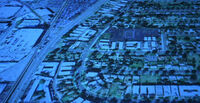
Inglewood, a city near South Central
- Main article: South Central Los Angeles
- See also: Compton, Inglewood, Willow Brook
South Central Los Angeles includes most of the city south of the 10 Freeway. The region was infamous as a hub of gang operations and warfare, from such groups as the Crips, Bloods, and the Salvadoran import MS-13. Independent cities often associated with South Central include Compton, Inglewood, and Willow Brook. (Trojan Horse, Chaos Theory)
San Fernando Valley
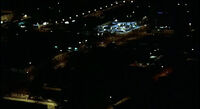
Van Nuys, located in the San Fernando Valley
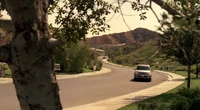
Granada Hills
- Main article: San Fernando Valley
- See also: Agoura Hills, Burbank, Calabasas, Glendale, San Fernando
The San Fernando Valley northwest of Downtown, sometimes referred to in common speech as the Valley, is the largest region of Los Angeles. It is primarily composed of suburban districts such as Granada Hills and Woodland Hills, along with business centers like the city of Burbank. ("Day 1: 12:00am-1:00am", "Day 6: 9:00am-10:00am", et al)
Districts of Los Angeles located in the Valley include:
- Canoga Park
- Chatsworth
- Granada Hills
- North Hollywood
- Panorama City
- Studio City
- Toluca Lake
- Van Nuys
- Woodland Hills
West Los Angeles
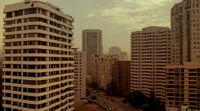
Apartment buildings on Wilshire Boulevard
- See also: Beverly Hills, Culver City, Malibu, Santa Monica
West Los Angeles was home to affluent residential neighborhoods such as Brentwood, as well as upscale shopping and business districts such as Venice and Century City. It was also the location of the original office of the city's Counter Terrorist Unit branch. ("Day 2: 9:00am-10:00am")
Wilshire
- Main article: Wilshire (region)
Wilshire, situated west of Downtown and north of the 10 Freeway, is a collection of working class to wealthy neighborhoods grouped around Wilshire Boulevard. ("Day 3: 3:00am-4:00am", "Day 5: 8:00am-9:00am")
Government and law enforcement
- See also: Los Angeles Police Department
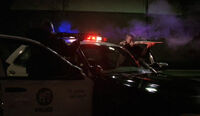
An LAPD unit engages a hostile mercenary unit
Los Angeles was governed by an elected mayor. ("Day 1: 7:00am-8:00am")
The Los Angeles Police Department was the primary body of local law enforcement in the city, responsible for maintaining social order, ensuring public safety, and investigating criminal activity. The department was divided into precincts covering the entire city, one of which is based in Van Nuys. The California Highway Patrol, in conjunction with the LAPD, monitored automobile traffic. ("Day 1: 4:00am-5:00am", "Day 2: 2:00pm-3:00pm")
On the federal level, numerous government agencies maintained offices in Los Angeles, including the Federal Bureau of Investigation, the Drug Enforcement Administration, National Health Services, and the Department of Homeland Security. In addition, the city was home to at least three installations of the CIA's Counter Terrorist Unit: two regional District and Division offices and CTU Los Angeles, a domestic unit tasked with investigating and preventing terrorist attacks within Los Angeles County. A fourth facility, a substation, was based in nearby Torrance. ("Day 1: 12:00am-1:00am", "Day 1: 1:00pm-2:00pm", "Day 3: 1:00pm-2:00pm", "Day 4: 2:00pm-3:00pm", "Day 5: 7:00pm-8:00pm")
Both the People's Republic of China and the Russian Federation had consulates in Los Angeles, which were considered sovereign territories of those nations, respectively. The United Kingdom's MI6 intelligence service operated an office in the city. ("Day 3: 5:00am-6:00am", "Day 4: 2:00am-3:00am", "Day 6: 5:00pm-6:00pm")
Transportation
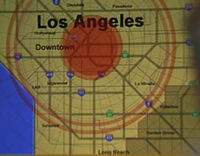
A map displaying Los Angeles' major thoroughfares
Transportation in Los Angeles was primarily automotive. The city was crisscrossed by a complex series of freeways and highways, providing access to most major regions, although traffic congestion was often a problem. These included:
|
East-west
|
North-south
|
These routes and others were overseen and maintained by Caltrans, which also operated a number of traffic cameras to locate driving infractions and assist law enforcement efforts. ("Day 3: 4:00pm-5:00pm", "Day 4: 9:00am-10:00am", et all)
Los Angeles offered public transportation by bus, train (provided by the Amtrak and Metrolink services), and subway. All three methods of travel were accessible from Union Station in Downtown. (Chaos Theory, "Day 2: 10:00am-11:00am", "Day 4: 8:00am-9:00am", "1:00pm-2:00pm", "Day 6: 7:00am-8:00am")
The Los Angeles area was serviced by Los Angeles International Airport (LAX), located in the southwest of the county off the 405. Other airports and airfields in the city included Norton Airfield and Van Nuys Airfield. ("Day 2: 8:00am-9:00am", "8:00pm-9:00pm", "Day 5: 8:00pm-9:00pm")
Infrastructure
Healthcare was provided by multiple hospitals throughout Los Angeles, including St. Mark's, Tyler Memorial, and Lindauer Memorial, among others. Urgent care facilities were equipped to handle walk-in cases requiring immediate medical attention, though many were not outfitted for major surgeries. ("Day 1: 5:00am-6:00am", "Day 2: 1:00am-2:00am", "Day 4: 3:00pm-4:00pm", "Day 5: 5:00pm-6:00pm")
The Los Angeles Fire Department had jurisdiction over the city, providing fire protection as well as auxiliary medical assistance at disaster sites. The Department of Water and Power (DWP) provided water and electricity to residents and businesses, in addition to performing repairs at faulty installations. ("Day 3: 5:00am-6:00am", "Day 5: 11:00pm-12:00am")
The city's power was provided at least in part by nuclear plants, like that on the nearby San Gabriel Island. Natural gas plants throughout Los Angeles, such as the Wilshire Gas Company, channeled gas to residential areas for use in cooking or heating. ("Day 4: 3:00pm-4:00pm", "Day 5: 9:00pm-10:00pm")
Media and culture
As a nexus of international commerce and politics, Los Angeles was home to several major news agencies, including FOX News, CNB, CTT, KHGC, KRLH, and WCN. These television channels reported on breaking news stories as they unfolded, providing in-depth coverage and commentary. The Los Angeles Times was a print periodical servicing the L.A. area. ("Day 1: 12:00am-1:00am", "Day 2: 10:00am-11:00am", et al)
Los Angeles was arguably the most important location and the largest contributor to the motion picture and television industry. Numerous production companies, and many famous movie stars, were based in the city or its vicinity. The annual Silver Screen Awards ceremony was a confluence of Hollywood royalty honoring the year's top achievements in film. (Trojan Horse)
Education
Primary education was provided by elementary and middle schools. ("Day 1: 9:00am-10:00am", "Day 3: 12:00pm-1:00pm")
Two major research universities, the University of Southern California and UC Los Angeles, were based in the city. Two-year colleges such as Santa Monica College offered associate degree programs and GED certification. ("Day 3: 1:00pm-2:00pm", Fox.com profiles)
History
Befitting its importance to both the United States and the world as a whole, Los Angeles proved to be a magnet for terrorism, crime, and political intrigue. Over a ten-year period, the city saw no fewer than five major incidents of terrorism, resulting in widespread devastation and panic. These attacks led to the proliferation of government and law enforcement agencies in the region, tasked with investigating and preventing these attacks before they could be carried out.
Day 1 primaries
- Main article: Season 1
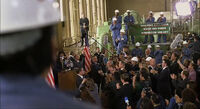
The morning breakfast at Santa Clarita
Day 1 saw the California Presidential primary, during which the Democratic Party would nominate its candidate for the upcoming election in November of that year. Both of the front-runner nominees, Senator David Palmer and Governor Mike Hodges, were in Los Angeles to rally support among their constituents. Following a rally attended by Palmer's children Keith and Nicole the night before, Palmer was scheduled to appear at a 7:00am breakfast at the Santa Clarita Power Plant, to address a large gathering of the state's energy and labor leaders, as well as Mayor Nelson. This was followed by a visit to Grant Street Elementary School to see the students and discuss Palmer's education plans with the faculty and staff. ("12:00am-1:00am", "1:00am-2:00am", "7:00am-8:00am", "9:00am-10:00am")
Palmer's schedule was complicated by the discovery that an unidentified group had hired a foreign assassin to kill him, which was learned shortly after a midnight phone call from Victor Rovner. Throughout the day, the agents of CTU Los Angeles contended with two assassination attempts against the Senator: one at the morning breakfast and another at his hotel around 10:30pm, via a cell phone bomb. Both attempts involved CTU director Jack Bauer, whose family had been kidnapped by the assassins as leverage to force him to assist their efforts. It was later discovered that both men were being targeted, in a vendetta by the family and associates of Victor Drazen, a Balkan warlord whose own wife and daughter had been killed in a mission led by Bauer and authorized by Palmer. ("12:00am-1:00am", "7:00am-8:00am", "2:00pm-3:00pm", "10:00pm-11:00pm")
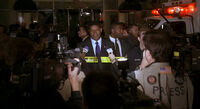
Senator Palmer makes a late-night apology to the press
Despite the threat, and a personal scandal that threatened to derail Palmer's campaign, the Senator proved successful in the primaries, carrying the vote over Hodges in all eleven states holding primaries on Super Tuesday. He and his supporters celebrated with a large party at his Century City hotel, which was attended by many of Los Angeles's most prominent citizens. Following the second attempt on Palmer's life, news outlets were briefly fed misinformation that he had been killed in the explosion, as part of a ploy to buy time to save Jack Bauer's daughter. Palmer was forced to address the media himself after his wife leaked the truth about his survival. ("8:00pm-9:00pm", "9:00pm-10:00pm", "11:00pm-12:00am")
Day 2 attempted nuclear attack
Eighteen months later, intelligence arrived via NSA operatives in South Korea that an Islamic fundamentalist group known as Second Wave was planning, that day, to detonate a Soviet nuclear warhead in the city of Los Angeles. If detonated five hundred feet above the heart of the city, it was estimated that one thousand square miles would be irradiated within seconds, with as many as one million total casualties in the city and the surround state. The National Security Agency coordinated a multi-agency search involving CTU Los Angeles, the Federal Bureau of Investigation, and the Los Angeles Police Department, while President David Palmer and his staff oversaw operations from the Northwest Regional Operations Complex in Oregon. ("8:00am-9:00am", "10:00am-11:00am", "2:00pm-3:00pm")
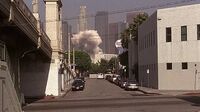
CTU Los Angeles is bombed
Law enforcement efforts hit a major setback when a domestic militia group led by Joseph Wald carried out a diversionary bombing on the CTU Los Angeles building in West L.A. The attack killed nearly fifty employees and put much of the agency's data in jeopardy, casting doubt on their ability to successfully intercept the nuclear weapon. The bombing drew national media attention, although the government had managed to keep news about the nuclear weapon from the press. ("10:00am-11:00am", "11:00am-12:00pm")
Late in the afternoon, CTU managed to capture Syed Ali, Second Wave's leader and financier, and through interrogation discovered that the bomb would be launched from Norton Airfield in central Los Angeles. A combined CTU and NEST team stormed the airport and, after a diversion involving a second dummy warhead, located the real bomb - set to go off in less than sixty minutes, but impossible to disarm without setting it off. Analysts in Oregon prepared two disposal scenarios: one placing the bomb in the Pacific Ocean and the other in the isolated Mojave Desert to the east. It was decided that the desert was the better option of the two, and would result in less economic and ecological damage to the country. ("7:00pm-8:00pm", "9:00pm-10:00pm", "10:00pm-11:00pm")
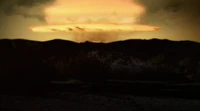
The nuclear device detonates in the Mojave
Former agent Jack Bauer volunteered to pilot the Cessna Caravan that would fly the bomb into the desert to detonate safely. Halfway through the flight, he was replaced by former CTU director George Mason, who was nearly dead from radiation poisoning and convinced Jack to bail out early. Mason successfully steered the plane into the designated depression, and the nuclear device detonated at 10:59pm. ("10:00pm-11:00pm")
The blast from the explosion was visible throughout Los Angeles County, as far north as Santa Clarita, and set off a wave of panic throughout the region. While most on the East Coast were asleep or otherwise unaware, pockets of civil unrest began breaking out throughout the country, while phone lines in the L.A. area were rendered all but useless due to increased call volume. Some citizens began forming vigilante posses targeting Middle Easterners, as a way of retaliating against the terrorists responsible. ("11:00pm-12:00am", "12:00am-1:00am", "3:00am-4:00am")
Early the next morning, President Palmer, who had flown to Los Angeles aboard Air Force One once the bomb was set off, gave a televised address to the people of Los Angeles outside District Command. Palmer urged them to return to work and to school, and to continue living their lives, saying that the freedom the people of America work for every day was what would keep them strong and protect them from their enemies. ("7:00am-8:00am")
Day 3 debate and virus outbreak
- Main article: Season 3
During the next election cycle, the University of Southern California was selected as the venue for the first of three televised presidential debates between President David Palmer and his opponent, Senator John Keeler of Minnesota. The debate commenced at 5:00pm Pacific Time, broadcast across the United States. The two politicians squared off on the issues pressing the country for more than an hour, but the event was cut short when the President announced that he had been informed of a developing national security crisis and excused himself from the stage. Senator Keeler and the audience, unaware of any such crisis, were left to wonder what had happened. ("5:00pm-6:00pm", "6:00pm-7:00pm")
In fact, the city of Los Angeles had been threatened with the imminent release of the Cordilla virus, a deadly and highly infectious type-3 immuno-pulmonary virus that had the potential to kill nine percent of the city's population within a week. Hector Salazar, a heroin kingpin based in Las Nieves, Mexico, was believed to have obtained the virus and was now using it to leverage the release of his brother, Ramon, who was being held in the Downey Federal Holding Facility. In secret, President Palmer authorized Jack Bauer to stage a prison break and deliver Ramon, preventing an outbreak while allowing the government to save face. After a helicopter chase over Downtown Los Angeles, both Bauer and Salazar managed to secure transport to Las Nieves. ("1:00pm-2:00pm", "5:00pm-6:00pm", "6:00pm-7:00pm")
Once Jack was in Mexico, CTU director Tony Almeida revealed to the President that the Salazars were not in possession of the virus, but rather, he, Jack, and Gael Ortega had been planning a sting operation to obtain the virus from its Ukrainian sellers before it could be sold to the Salazars or another potential enemy of the United States. Despite the best efforts of CTU's agents and the Delta Force unit deployed in Mexico, however, Michael Amador managed to escape the authorities and boarded a plane back to Los Angeles - his auction of the virus had been a calculated con, robbing the Salazars of two hundred million dollars while keeping the virus for another party. ("8:00pm-9:00pm", "12:00am-1:00am", "1:00am-2:00am")
That party was Stephen Saunders, a former MI6 agent who had been abandoned by the United States government in Kosovo after the failed mission that targeted Victor Drazen. Saunders provided eleven vials of the Cordilla virus outfitted with Soviet dispersal devices to couriers and dispatched them to cities throughout the country, planning to use the threat of its release to "dismantle the American military machine." One of these couriers, Arthur Rabens, was ordered to release his vial in Los Angeles the next day, while the other, Marcus Alvers, was tasked with infecting the Chandler Plaza Hotel on Wilshire Boulevard, as a demonstration of the virus's potential for destruction. CTU Los Angeles was unable to prevent Alvers from attacking the hotel, leaving the thousand guests and staff - as well as a CTU field team - trapped inside, unable to leave lest they risk spreading the virus to the general population. Over the next nine hours, most of these victims became symptomatic and started to die. The building was placed under total quarantine, and armed guards were placed at the entrances. ("2:00am-3:00am", "3:00am-4:00am", "5:00am-6:00am")
Around 6:00am, it was discovered that an unidentified man had managed to escape from the hotel before it was completely locked down. While CTU desperately searched for clues to his identity, the man himself - Bill Cole - came into contact with his wife, the people at a pharmacy, and the waiting room of an urgent care center in Studio City, before he was finally located and apprehended. His escape, however, had started a ripple effect of new outbreaks throughout the Los Angeles area, as each person Cole had contacted carried the virus back to their homes and workplaces. By 10:00am, the new quarantine zones accounted for 11% percent of the city. To prevent further transmission, the government shut down both air travel and public transportation, urging citizens to remain at home. ("6:00am-7:00am", "7:00am-8:00am", "8:00am-9:00am")
With the assistance of the Air Force, Stephen Saunders was finally captured by CTU, and coerced into revealing the extent of his plot when Jack Bauer threatened to infect his daughter Jane. Law enforcement throughout the country began intercepting the couriers before they could deliver their payloads, and ten were accounted for by noon. However, the final courier - Rabens - had been ordered to choose a target on his own and cut off contact with Saunders. Jack and his partner Chase Edmunds used the vial's transponder frequency to track him to Jefferson Middle School and ultimately succeeded in preventing another outbreak. The virus was contained. ("10:00am-11:00am", "11:00am-12:00pm", "12:00pm-1:00pm")
Day 4 attacks
The events of Day 4 were some of the worst in US history with the derailing of a train, the kidnapping of the Secretary of Defense inside the city, the meltdown of a nuclear power plant, the detonation of an EMP device in the city and the destruction of Air Force One.
Day 5 gassing and martial law
The events of Day 5 have included the assassination of former President David Palmer, the hostage takeover of Ontario Airport, the theft of Sentox nerve gas and its subsequent release in a shopping mall, the threatened release in an area hospital, the successful release of the gas in CTU headquarters, resulting in the deaths of 40% of CTU personnel, the detonation of many of the remaining canisters in a gas plant, and the final canister of gas being released aboard the Russian submarine Natalia.
Day 6 bombings
During Day 6, a suicide bomber destroyed a bus in downtown LA, killing himself and as many as 23 others. Another suicide bomber attempted to detonate a bomb in a vest on a subway, only to be stopped and shoved out of the train by Jack Bauer, when the vest exploded, killing only the bomber. More tragically, a nuclear detonation occured outside of LA in Valencia at approximately 9:58am PST, killing at least 12,000 people within minutes.
Notable locations by type
Districts | ||||
Government and law enforcement |
Economy and industry | |||
Education |
Medical facilities | |||
Residential |
Transportation | |||
Background information and notes
- Every episode of the first six seasons of 24 were filmed and set at least in part in Los Angeles.
- Although Season 7 was set in Washington, D.C., and Season 8 in New York, the majority of filming actually occurred in Los Angeles.








